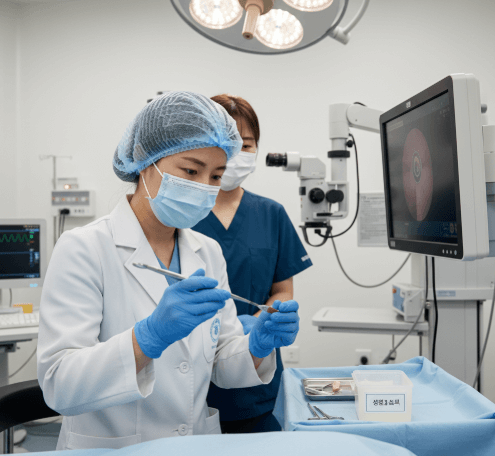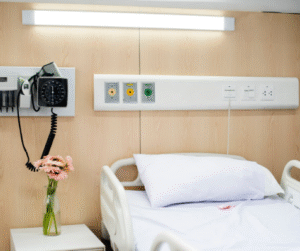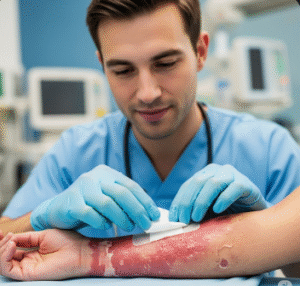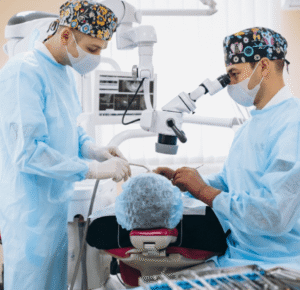What it is
- ➤ A cervical biopsy is a diagnostic procedure where a doctor removes a small piece of tissue from the cervix (the lower part of the uterus) for examination under a microscope.
- ✦ The aim is to confirm whether abnormal cells—detected during Pap smear, HPV testing, or colposcopy—are precancerous, cancerous, or benign.
- ➟ Different types of cervical biopsies:
- ▪ Punch biopsy: Small tissue samples are taken with a punch instrument during colposcopy.
- ▪ Endocervical curettage (ECC): Scrapes cells from the cervical canal.
- ▪ Cone biopsy (conization): Removes a larger cone-shaped portion of cervical tissue, often done if high-grade lesions are suspected.
- Important: Cervical biopsy is a diagnostic test, not a treatment, but it provides definitive answers about abnormal cervical findings.
Why it’s done
- ➤ Main purpose: To determine if abnormal cervical cells are precancerous or cancerous.
- ✦ Indications include:
- ▪ Abnormal Pap smear (ASC-US, LSIL, HSIL).
- ▪ Positive high-risk HPV test.
- ▪ Suspicious cervical appearance during colposcopy.
- ▪ Unexplained vaginal bleeding.
- ➟ Benefits:
- ✅ Provides a clear diagnosis, allowing timely treatment.
- ✅ Differentiates between harmless changes and true precancer/cancer.
- ⟶ Limitations:
- ▪ Invasive compared to Pap/HPV test.
- ▪ May cause mild bleeding or discomfort.
- Bold takeaway: Without biopsy, doctors cannot confirm if abnormal cells are truly dangerous—it is a key step for cancer prevention.
Alternatives
- ➤ Repeat Pap or HPV test: For minor abnormalities, but less definitive.
- ✦ Colposcopy without biopsy: Can suggest abnormal areas but cannot confirm diagnosis.
- ➟ Imaging (ultrasound/MRI): May help for advanced cases but not a replacement for biopsy.
- Important: No test fully replaces a biopsy for confirming cervical cancer.
Preparation
- ➤ Timing: Best scheduled when not menstruating.
- ✦ Avoid for 24–48 hours before biopsy:
- ▪ Sexual intercourse
- ▪ Vaginal creams or medicines
- ▪ Douching
- ▪ Tampons
- ➟ Tell your doctor if you:
- ▪ Are pregnant (some biopsies are avoided).
- ▪ Take blood thinners (risk of bleeding).
- ▪ Have clotting or immune disorders.
- → Bring: Prior Pap/HPV results, medical records, ID or insurance card.
- Important: Eat lightly before the procedure unless sedation is planned.
How it’s done
- ➤ Step 1 – Colposcopy setup: You lie on an exam table, a speculum is inserted to visualize the cervix.
- ✦ Step 2 – Application of solutions:
- ▪ Vinegar solution turns abnormal cells white.
- ▪ Lugol’s iodine helps highlight suspicious areas.
- ➟ Step 3 – Biopsy collection:
- ▪ Punch biopsy: tiny samples removed.
- ▪ ECC: cells scraped from inside the canal.
- ▪ Cone biopsy: a larger cone-shaped sample removed under anesthesia.
- ➤ Step 4 – Hemostasis: The doctor may use chemical solution or cautery to control bleeding.
- → Duration: 10–20 minutes for small biopsies, longer for cone biopsy.
- Important: Local anesthesia may be used for comfort; cone biopsy often requires regional or general anesthesia.
Recovery
- ➤ After punch biopsy or ECC:
- ▪ Mild cramping and spotting for a few days.
- ▪ Avoid tampons, intercourse, and douching for 5–7 days.
- ✦ After cone biopsy:
- ▪ Heavier bleeding possible for up to 2 weeks.
- ▪ Recovery may take 2–4 weeks.
- ▪ Strict restrictions on heavy exercise and intercourse.
- ➟ Results:
- ▪ Normal → resume routine screening.
- ▪ Precancer (CIN) → treatment options like cryotherapy, laser, or LEEP.
- ▪ Cancer → staging and oncology care.
- ⟶ Seek urgent care if:
- ➤ Heavy bleeding (soaking pads).
- ➤ Severe pain or fever.
- ➤ Foul-smelling discharge.
- Important: Follow-up visits are essential to plan treatment and prevent progression.
Treatment option in Korea
- ➤ Where available:
- ▪ University hospitals in Seoul, Busan, Incheon, Daegu, Gwangju.
- ▪ Specialized women’s health centers with gynecologic oncology units.
- ✦ Why Korea:
- ▪ Advanced diagnostic labs for rapid and accurate pathology.
- ▪ Expert OB-GYNs with high procedure volumes.
- ▪ International clinics with English-speaking coordinators.
- ➟ If biopsy is abnormal:
- ▪ Cryotherapy or laser → destroys abnormal tissue.
- ▪ LEEP (Loop Electrosurgical Excision Procedure) → removes abnormal areas precisely.
- ▪ Cone biopsy/excision → deeper tissue removal if high-grade precancer.
- ▪ Comprehensive cancer care if invasive cancer is diagnosed.
- ⟶ For international patients:
- ▪ Share prior test results in advance.
- ▪ Expect same-day biopsy with results in a few days.
- ▪ Request reports in English for home country doctors.
- Important: Korea’s medical system emphasizes efficiency + accuracy, making it suitable for both residents and international patients seeking reliable cervical care.












